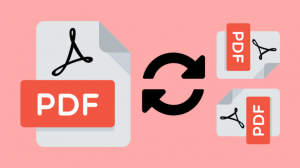With so many businesses competing, having a strong online presence and website traffic is essential to succeed.
Website traffic, in simple terms, refers to the number of visitors who visit a website. It’s a key metric for measuring a website’s popularity, relevance, and success. By driving quality traffic to their website, businesses can improve online visibility and increase conversions, resulting in higher revenue and business growth.
If you’re new to paid search advertising or looking to improve your campaigns, this guide will help you understand how to boost your traffic through paid search management services.
Define Your Audience
Before you launch any campaigns, you need to understand who your ideal customers are, what they’re interested in, and how they behave online. This helps you create targeted campaigns that resonate with them so you can increase the chances of converting your visitors into customers.
To define your audience, you can use tools like Google Analytics to understand how your target audience behaves online, what they search for, and where they spend their time.
Refine Your Keyword List
Refining your keyword list is crucial to maximizing your ad spend and reaching your target audience.
To do this, focus on selecting keywords relevant to your business with high search volumes. These keywords will help ensure that your ads appear in front of users who are genuinely interested in your products or services.
Do Keyword Research
Keyword research allows you to identify the keywords and phrases your target audience is searching for, ensuring that your ads appear in front of the right people at the right time. By conducting thorough keyword research, you can create effective campaigns that drive qualified traffic to your website.
You can use tools like Google Keyword Planner, SEMrush, or Ahrefs. These tools will help you identify high-performing keywords that align with your business goals and have high search volumes.
Structure Campaigns and Ad Groups
Once you have refined your keyword list, it’s time to structure your campaigns and ad groups. This is essential for targeting the right audience and achieving optimal performance.
To structure your campaigns and ad groups, consider grouping your keywords by product category or theme. For example, if you sell clothing, you might create ad groups for different types of clothing, such as shirts, pants, and jackets. Then, within each ad group, create an ad copy that aligns with the group’s keywords and highlights its unique features or benefits.
Write Compelling Ads
Creating engaging, informative, and compelling ad copy increases the likelihood of driving qualified traffic to your website.
To create ad copy that sells, start by highlighting your unique value proposition. What sets your business apart from the competition? Focus on the benefits of your products or services.
Include a clear call to action encouraging visitors to click through your website. This could be as simple as “Learn More” or “Shop Now.” This clarifies what action you want visitors to take.
Remember, writing compelling ad copy takes time and practice. Test different variations to see what works best for your target audience, and continually refine your ads to improve their effectiveness.
Create a Bid Strategy
Your bid strategy determines how much you will pay for each click on your ads. It can significantly impact the success of your campaigns.
Start by determining your maximum cost-per-click (CPC) bid, the highest amount you’ll pay for each click on your ads. Consider your budget and the potential return on investment (ROI) for each click when setting your maximum CPC bid.
Next, consider the competition for each keyword. If a keyword has high competition, you may need to increase your maximum CPC bid to ensure your ads appear in front of the right people.
Create Conversion Tracking
Creating conversion tracking is a crucial step in paid search management services. By tracking the actions visitors take on your website, you can measure the success of your campaigns and optimize them for better performance. This data can help you identify which keywords, ad groups, and campaigns drive the most conversions, and adjust your bidding and targeting strategies accordingly.
To set up conversion tracking, identify the key actions you want visitors to take on your website, such as purchasing, filling out a contact form, or subscribing to a newsletter. Then, set up conversions tracking in your ad platform, such as Google Ads or Bing Ads, to track these actions and measure their effectiveness.
Optimize for Conversions
Optimizing your campaigns for conversions is crucial for increasing your website traffic. You should analyze your data regularly and make adjustments to your campaigns to improve your conversion rates. For example, you could test different ad copy, landing pages, or offers to see what resonates with your target audience.
Optimize for Quality Score
Quality Score is a metric used by Google to measure the relevance and quality of your ads and landing pages. It can significantly impact your cost per click and ad position.
To optimize for Quality Score, focus on relevance, ad copy, landing page experience, and click-through rate. Ensure that your ad copy and landing pages align with your keywords and are relevant to your target audience. Additionally, create engaging and informative ad copy that entices users to click on your ads.
Boost Your Website Traffic with Paid Search Management Services
Increasing your website traffic through paid search management services requires a combination of proven strategies, experience, and results.
If you’re not sure how to start or if you’re looking to improve your current campaigns, it can be challenging to navigate the complexities of the process. However, with the right expertise and support through an expert PPC agency like LeadOrigin, and a customized strategy that aligns with your needs, you can make the most of your advertising budget and drive more qualified traffic to your website.
With the right approach and the right partner, you can achieve sustainable growth and success for your business.
Follow TechRado for more!






